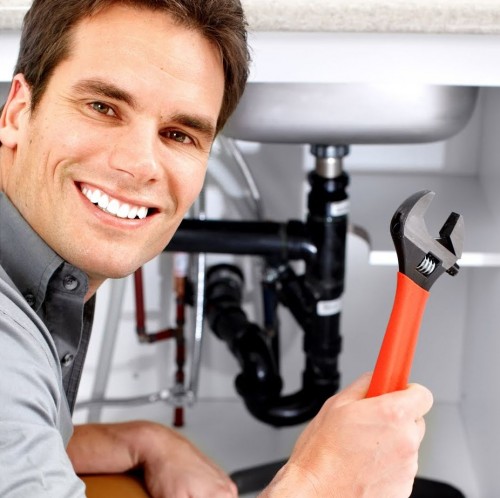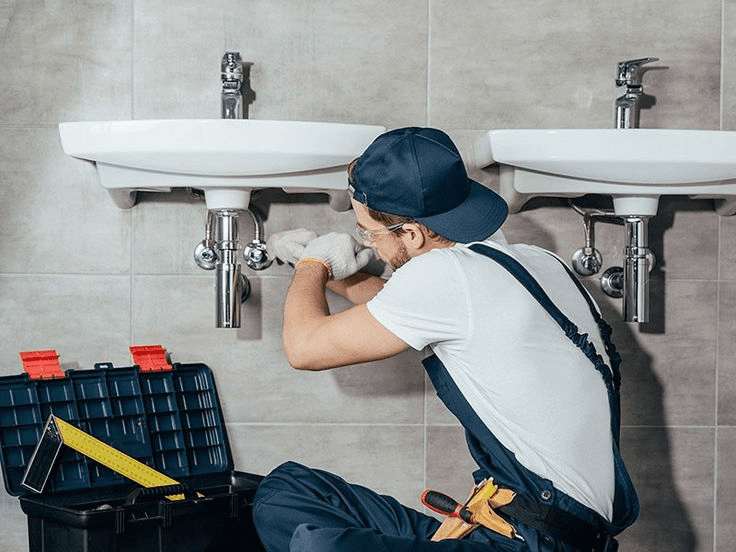Getting Acquainted with Home Plumbing Basics: A Beginner's Handbook
Getting Acquainted with Home Plumbing Basics: A Beginner's Handbook
Blog Article
What're your thoughts on Plumbing Basics For Every Home: The HomeTriangle Guide?

Plumbing is a crucial facet of any home, responsible for supplying clean water for drinking, cooking, and bathing, in addition to eliminating wastewater safely. Understanding the fundamentals of home plumbing is vital for each home owner to guarantee proper maintenance, troubleshooting, and, if needed, repair work. In this newbie's overview, we'll cover the basic principles of home plumbing to assist you become more aware of exactly how it functions.
Water Heater
The water heating system is responsible for heating water for domestic use, consisting of showering, food preparation, and cleansing. Typical types of hot water heater consist of tank-type hot water heater, tankless (on-demand) hot water heater, and heat pump hot water heater. The hot water heater is linked to the supply of water system and supplies hot water to plumbing fixtures as required.
Water drainage System
The drainage system eliminates wastewater from your home and brings it away to a sewage treatment center or septic tank. It contains a network of pipes, fittings, and fixtures that deliver wastewater from plumbing components to the main drain line or sewage-disposal tank. Correct water drainage is essential to avoid obstructions, back-ups, and sewage leakages.
Air flow System
The ventilation system helps maintain appropriate air pressure and prevent sewer gases from entering your home. Vent pipes, also referred to as air vent heaps, extend from plumbing components to the roof, allowing sewer gases to get away securely outdoors. Air flow pipes additionally allow air to go into the drain system, facilitating smooth wastewater flow and stopping suction or vacuum impacts.
Supply Of Water System
The water system brings tidy water right into your home from a municipal water source or an exclusive well. It contains a major water line that attaches to your home's plumbing system, usually located underground. A water meter determines the amount of water taken in, while a shut-off valve permits you to regulate the flow of water into your home.
Plumbing Fixtures
Plumbing fixtures are tools that provide water to numerous parts of your home and include sinks, taps, commodes, showers, tubs, and appliances such as dishwashers and cleaning devices. Each component is attached to the water system by means of pipelines and fittings and may have its shut-off valve for upkeep or emergencies.
Common Plumbing Tools
Having the right devices handy is crucial for doing standard plumbing repair services and upkeep tasks. Typical plumbing tools consist of adjustable wrenches, pipe wrenches, pliers, pipe cutters, hacksaws, bettors, augers (or drain serpents), and Teflon tape. Having these tools easily available can assist you deal with small plumbing problems effectively.
Basic Plumbing Repair Work
While some plumbing repairs might call for specialist help, many usual concerns can be addressed with basic DIY methods. Understanding exactly how to fix a dripping tap, unblock a drainpipe, replace a toilet flapper, or fix a dripping showerhead can save you time and money on plumbing repair services.
Conclusion
Comprehending the basics of home plumbing is essential for every single homeowner to preserve a secure, practical, and effective plumbing system. By acquainting on your own with the water system, plumbing components, drainage system, ventilation system, common plumbing tools, and basic repairs, you can with confidence attend to minor plumbing issues and guarantee your home's plumbing system operates efficiently.
Plumbing for Beginners: A Comprehensive Guide
If you’re a beginner when it comes to plumbing, don’t worry; you’re not alone. Plumbing may seem intimidating, but with the right knowledge and a little practice, you can handle many common plumbing issues on your own. In this comprehensive guide, we will demystify the world of plumbing for beginners, providing you with the basic knowledge and skills needed to tackle common plumbing problems and even take on some DIY plumbing projects.
The Importance of Basic Plumbing Knowledge for Beginners:
First and foremost, basic plumbing knowledge gives you a solid foundation. It helps you grasp the key concepts and terminology that are essential in this field. By learning the basics, you’ll be able to build upon that knowledge and tackle more complex plumbing tasks in the future.
Having a basic understanding of plumbing also enables you to handle common issues that may arise in your home. Picture this: a leaky faucet or a clogged drain. With some basic plumbing knowledge, you’ll have the confidence to troubleshoot and fix these problems on your own. It saves you from unnecessary expenses and the hassle of waiting for a professional to arrive.
As a beginner, learning the basics of plumbing empowers you to take care of your own home. It gives you a sense of independence and self-reliance. You’ll no longer have to rely solely on professionals for every small issue that pops up. Instead, you can handle many tasks yourself, saving time and money in the process.
Remember, everyone starts as a beginner. Embrace the learning process and take small steps to expand your plumbing knowledge. There are plenty of online resources, tutorials, and even local workshops that talk about plumbing for beginners.
Essential Tools for Plumbing for Beginners
As you start your plumbing journey, having the right tools in your toolbox is crucial. Let’s explore some of the must-have tools:
Adjustable Wrench:
This versatile tool is a staple in any plumber’s toolbox. It allows you to tighten or loosen nuts and bolts of various sizes. Make sure to have an adjustable wrench with a comfortable grip.
Pipe Wrench:
A pipe wrench is specifically designed for gripping and turning pipes. It has serrated jaws that provide a strong grip, making it easier to loosen or tighten threaded pipes and fittings.
Plunger:
The plunger is a simple yet effective tool for clearing clogged drains and toilets. It creates suction when you push and pull, helping to dislodge blockages. Keep a good-quality plunger handy for those unexpected clogs.
Pipe Cutter:
When it comes to cutting pipes, a pipe cutter is your go-to tool. It creates clean, precise cuts without damaging the pipe. Look for a pipe cutter that can handle the pipe sizes you’re working with.
Hacksaw:
A hacksaw is useful for cutting through pipes, screws, and other materials. It’s a versatile tool that can handle different cutting tasks. Remember to use a blade suitable for cutting metal.
Tape Measure:
Accurate measurements are crucial in plumbing. A tape measure allows you to measure pipe lengths, distances, and dimensions accurately. Opt for a sturdy tape measure that extends a good length.
Pliers:
Pliers come in handy for various tasks, such as gripping, bending, and cutting. Slip-joint pliers with adjustable jaws are great for gripping pipes, nuts, and bolts.

We hope you enjoyed reading our topic on Understanding the Basics of Your Home's Plumbing System. Thanks a lot for taking the time to read our content. I beg you pause to distribute this blog posting if you enjoyed reading it. We thank you for your readership.
Website Report this page